Animal Adaptations: Color Experiment
Materials
1 (for small groups) or 2 (for larger groups) Family Size bags of skittles
Pencil/Paper for Recording Data
Timer
Advance Preparation: Count out 50 (small groups) or 100 (large groups) skittles in each of the five colors (red, purple, yellow, orange, green). Spread skittles over a set area outside based on the size of your group (we used about 200 sq ft). Try not to spread the skittles too long before your activity to prevent factors like water/ color melting or sneak-age by animals or nosy kids that would skew the final data.
Lesson Instructions
1. Explain to the group what you have done and tell them they will have five minutes to find as many of the skittles as they can, but no eating! Make predications about which colors will be the easiest/hardest to find.
2. Give the students 5 minutes to search.
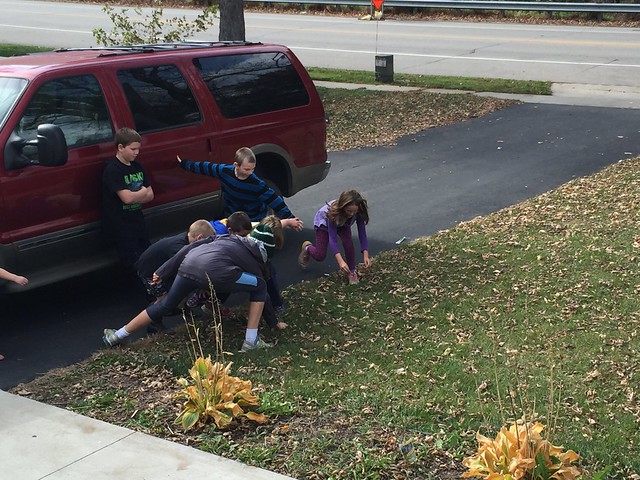 |
| On your mark…clearly Aidan is unimpressed. |
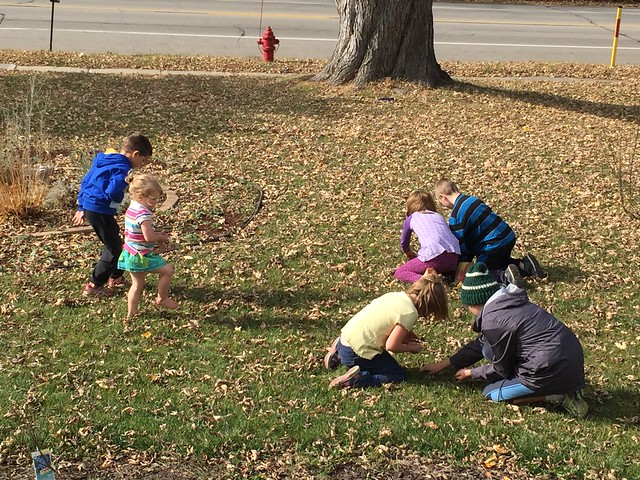 |
| Busily searching. |
3. When the timer is up, have the students sort the skittles, count, and calculate percentages. TIP: If you have multi-age groups, have the youngest ones sort, the middles count, and the oldest do the percentages. We double check all math with a partner.
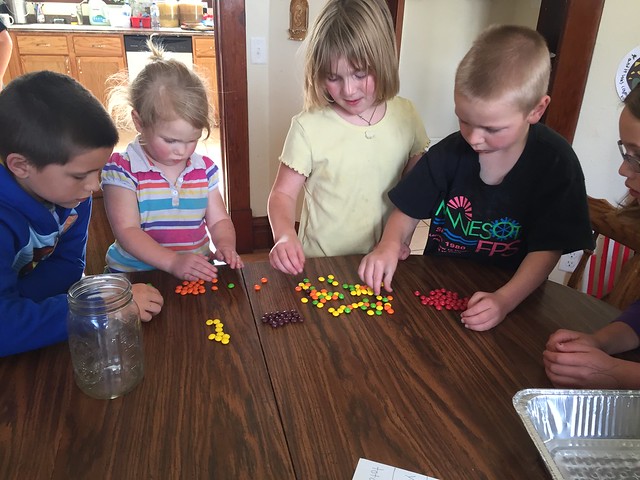 |
| Sorting and Counting. |
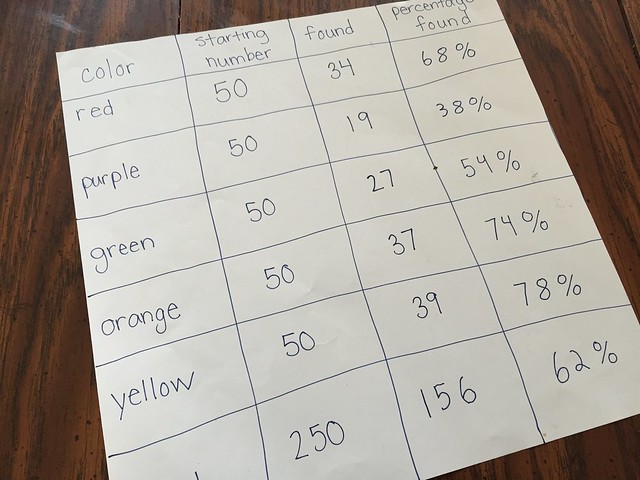 |
| Final Tally. |
4. Discuss the results. Which predictions were correct? Which were not? Why do you think that is? Was it easier or harder to find the skittles than they thought?
5. Introduce the term camouflage (if it didn’t come up already- it might) and discuss animal coloring. Have students imagine they were looking at a field with a birds-eye view. What would they see? How do the seasons affect camouflage?
6. If you are like me, throw the used-ground, sticky-fingered, skittles in the garbage and provide a small treat during work time from the leftovers.
Tip: If you have allergies or just don’t want to use food, the Waseca album suggests using colored toothpicks for this activity. I’ve never tried it this way, but I would be interested to compare the found percentages as I think it would be harder in some ways and easier in others. Tim thinks it would change the experiment because the toothpicks wouldn’t necessarily penetrate the grass making them easier to find. Students may also be more inclined to notice them when crawling than they do the skittles.

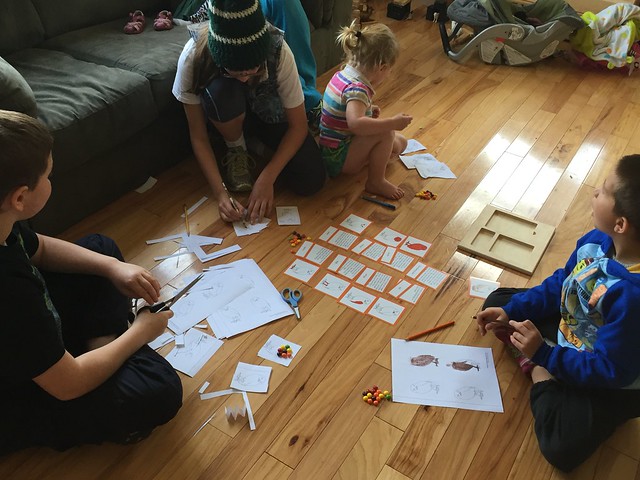
Recent Comments